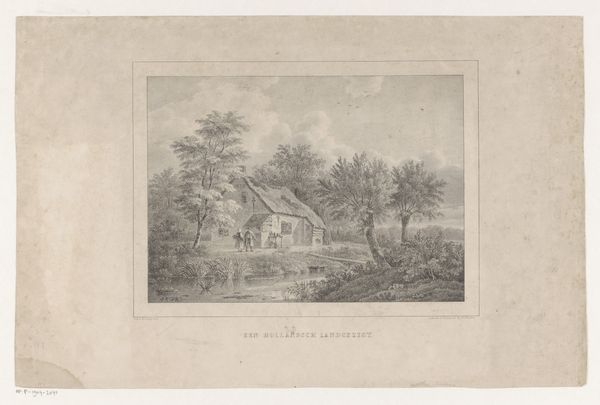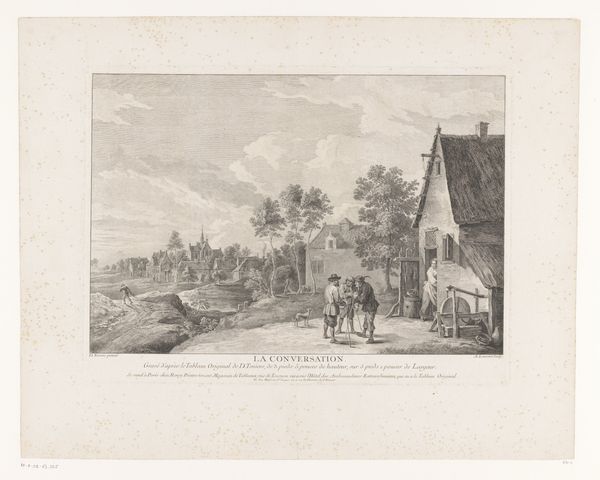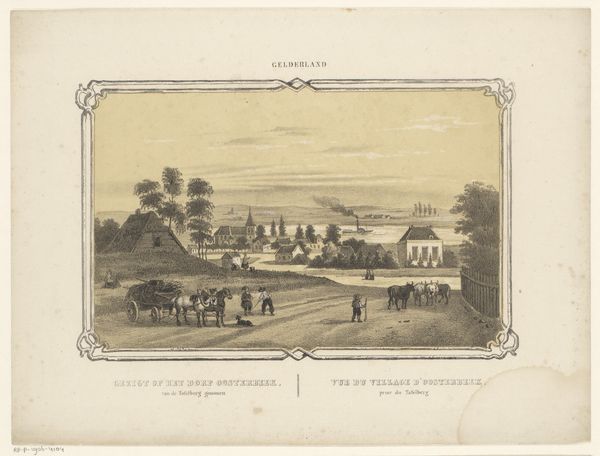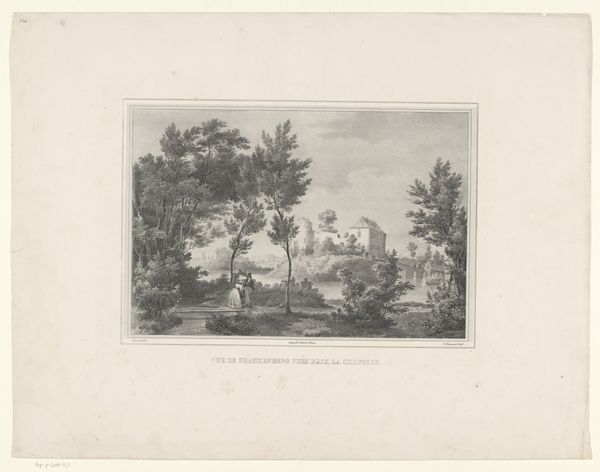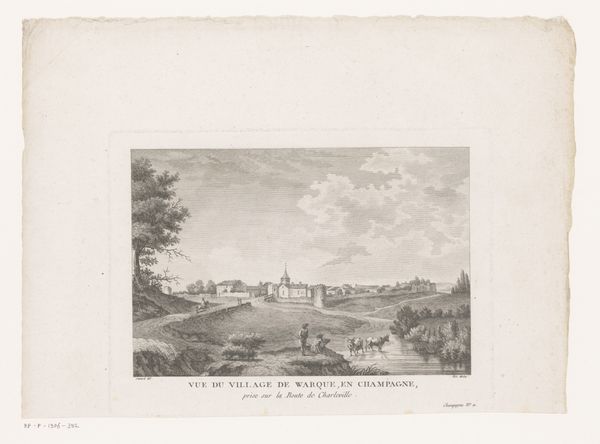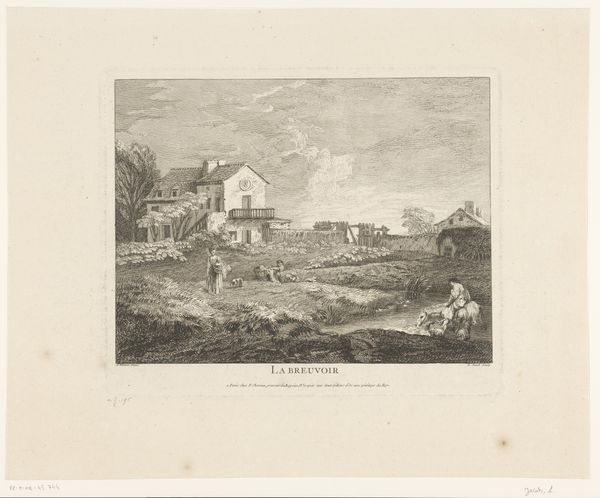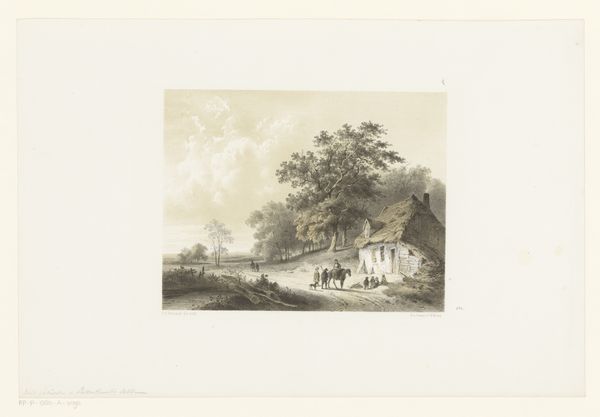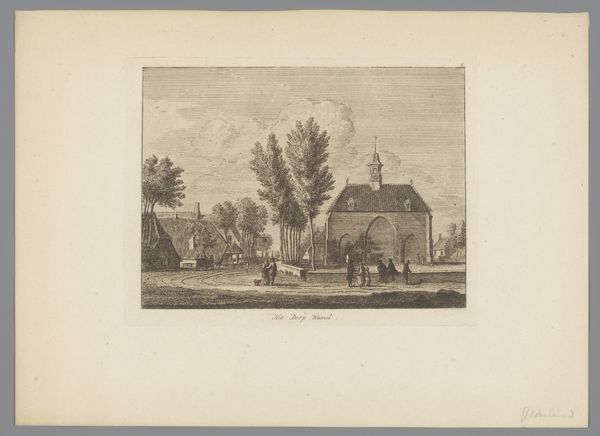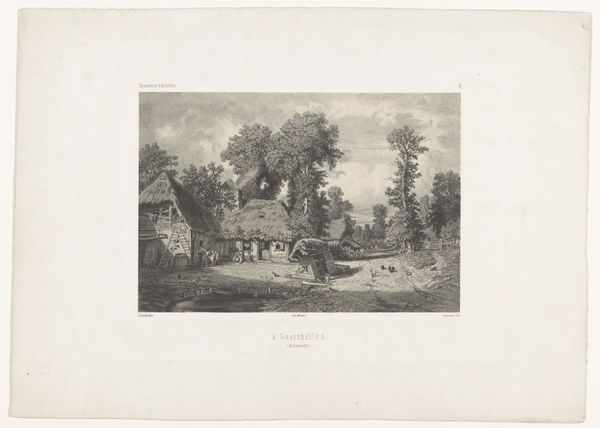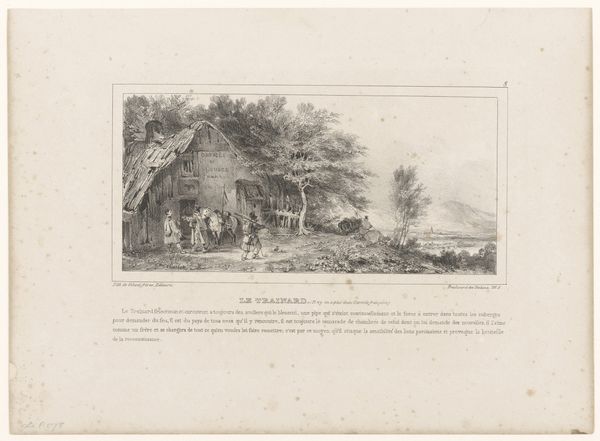
Dimensions: height 148 mm, width 199 mm
Copyright: Rijks Museum: Open Domain
Curator: Ah, there's something about the stillness here. I find myself utterly captivated by the delicate, almost whispered quality of this image. It's called "Gezicht op Goethes Gartenhaus, te Weimar", and it's an engraving—or rather, both an etching and an engraving—depicting Goethe's garden house. The piece is housed here at the Rijksmuseum. Editor: It has a distinct Romantic sensibility about it, doesn’t it? A kind of hushed reverence. I see figures in the foreground, almost like stage actors presented to us, with this perfect miniature house surrounded by foliage behind. How do you interpret this positioning? Curator: Exactly. There's a gentle staging to it, reminiscent of genre-painting. The positioning certainly speaks to Romanticism's obsession with nature, wouldn't you say? The Gartenhaus itself becomes this haven, a symbol of cultivated beauty and refuge. It’s less about the house and more about the yearning that it invokes. Editor: Yes, and the very act of engraving, its laborious precision, echoes that sentiment. It takes time and concentrated devotion to create an image in this way, and these acts in themselves become commentary on art. How interesting, then, that it shows a very domesticated nature. No raging storm clouds here. Curator: I completely agree. This isn’t the untamed sublime of a Caspar David Friedrich, is it? And yet, within that domesticity, there's a hint of the wistful, the melancholic. This little scene with the people in the foreground seem aware of the ephemerality of their moment. They visit the great Goethe’s garden and wonder… Editor: The political dimensions fascinate me. Landscape, genre painting, and even Romanticism can seem disconnected from worldly issues. However, depicting Goethe's Gartenhaus also shows admiration for intellectuals, for knowledge, for the arts. During times of great revolution, it says that culture persists. That genius and insight leave their mark. Curator: It truly is like capturing a fragment of eternity. Makes one consider how gardens themselves – as spaces, as metaphors – connect with memory, time, and our ceaseless efforts to tame and shape the world around us. Editor: Looking closer at it, knowing how these kinds of images circulated widely through printed media, I am intrigued to see what meaning past audiences might have gleaned when they looked upon the site of great knowledge. Curator: Well, I know I'm walking away thinking about the relationship of greatness and beauty, how the simple acts of creation connect us across time. It's as the engraving shows us the power of quiet reflection in a beautiful space.
Comments
No comments
Be the first to comment and join the conversation on the ultimate creative platform.
